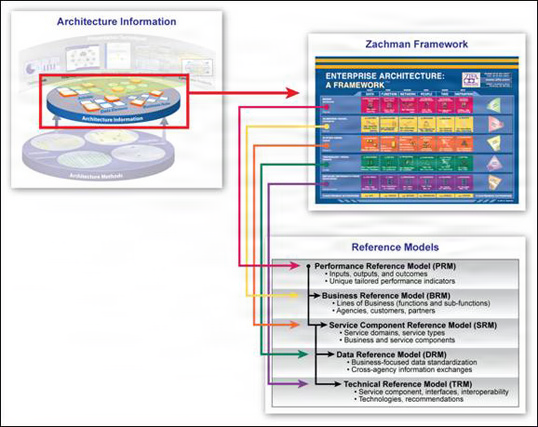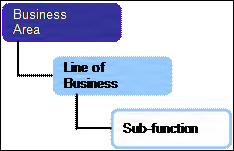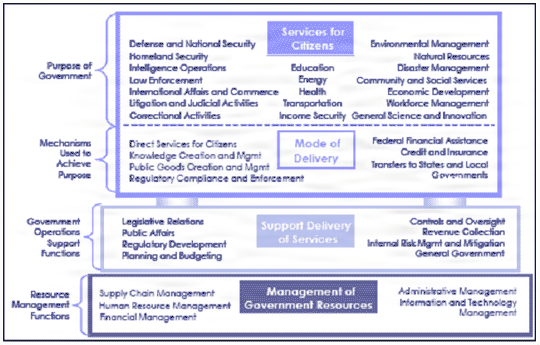Architecture Development
Reference Models
Reference models provide textual extractions of underlying architectural data. As the notional reference model figure below illustrates, reference models capture the elements of the architectural views, and translate those elements into text. This reference model provides a framework for describing important elements of the FEA in a common and consistent way. The FEA consists of five reference models: Performance Reference Model (PRM), Business Reference Model (BRM), Service Component Reference Model (SRM), Data Reference Model (DRM), and the Technical Reference Model (TRM). Through the use of this common framework and vocabulary, IT portfolios can be better managed and leveraged across the Federal Government.
|

A Notional Reference Model
|
Purpose and Audience
Reference models are designed to facilitate cross-agency analysis, through the development of a common taxonomy and ontology for describing the business operations of Federal agencies, independent of any specific agency. Cross-agency analysis is used by planners and process owners to identify duplicate investments, gaps, and opportunities for collaboration within and across agencies. Collectively, the reference models comprise a framework for describing important elements of the FEA in a common and consistent way. Through the use of this common framework and vocabulary, IT portfolios can be better managed and leveraged across the Federal Government.
Examples
One example of a reference model is the FEA BRM. The BRM provides an organized, hierarchical construct for describing the day-to-day business operations of the Federal Government. While many models exist for describing organizations, (organization charts, location maps, etc.) this model presents the business using a functionally driven approach. The Lines of Business and Sub-functions that comprise the BRM represent a departure from previous models of the Federal Government that use antiquated, stove-piped, agency-oriented frameworks. The BRM is the first layer of the Federal Enterprise Architecture, and it is the main viewpoint for the analysis of data, service components, and technology:
|

BRM Structure
|
The BRM is broken into four areas: Services for Citizens, Mode of Delivery, Support Delivery of Services, and Management of Government Resources. The model's four Business Areas are decomposed into 39 Lines of Business. Each business line includes a collection of Sub-functions that represent the lowest level of granularity in the BRM. For example, the Environmental Management Line of Business encompasses three Sub-functions: (1) Environmental Monitoring and Forecasting; (2) Environmental Remediation; and (3) Pollution Prevention and Control. Within each Sub-function are the agency-specific business functions, processes, and activities:
|

BRM Areas
|